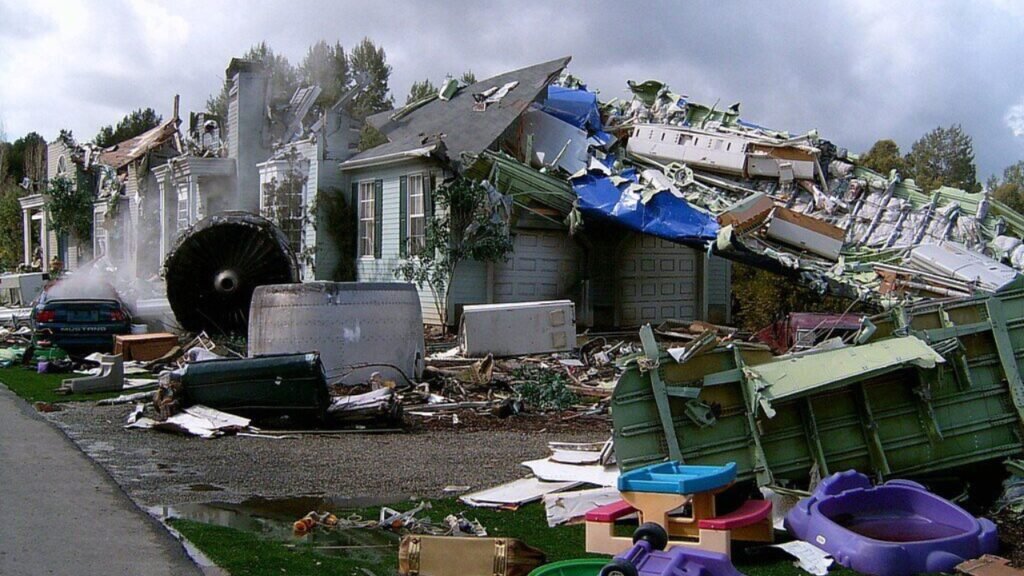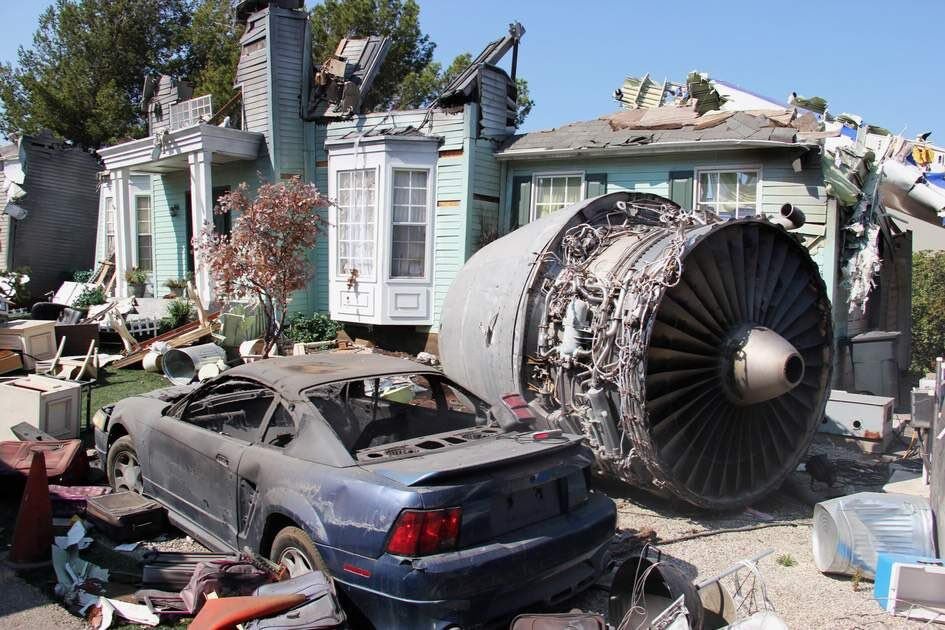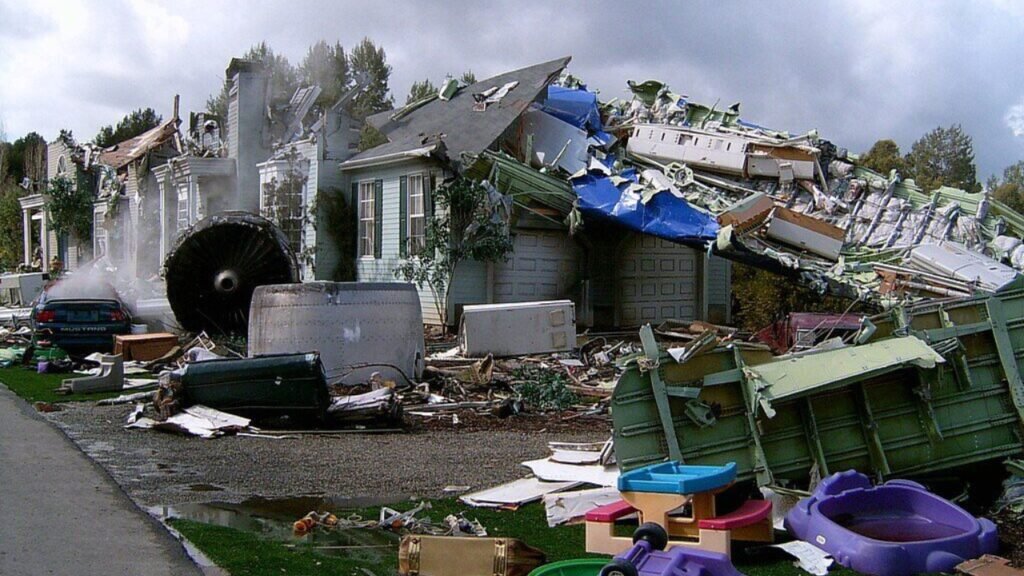Urban Tremors: The Impact Of L.A.’s Latest 4.4-Magnitude Earthquake
- Leave a Comment
- James M
- August 13, 2024

Earthquakes are common in Los Angeles. The city, which is situated along the Pacific Ring of Fire, has long been used to the odd rumble underneath.
The ground might shift at any time, and Angelenos have to live with that fact. Minor tremors go unnoticed, while larger quakes serve as vivid reminders of the region’s seismic activity.
This knowledge has influenced the city’s disaster preparedness, infrastructure, and even the general attitude of its citizens over time.
That all too familiar reality returned on Monday with the 4.4-magnitude earthquake that rocked Los Angeles County’s Highland Park neighborhood.
The earthquake, which happened shortly after midday, shocked many people and sent shockwaves across the center of the city.
Although the U.S. Geological Survey later revised its initial assessment of the earthquake’s magnitude to 4.4, it was felt throughout a large region of Southern California, extending from San Diego to Simi Valley.
Even though there were no significant injuries or damages recorded, the earthquake was a stark reminder of how unpredictable life can be in Los Angeles.
Buildings trembled, frightened citizens fled, and the city’s emergency services moved rapidly to contain the situation. Even though it wasn’t the strongest, the quake had a major psychological effect, especially in an area where the next big one is always a possibility.

The Direct Effect
At about 12:20 p.m. on Monday, an earthquake rattled Los Angeles County, causing a shock through the Highland Park neighborhood and beyond.
The epicenter was found near Highland Park, a heavily populated area northeast of downtown Los Angeles, according to the U.S. Geological Survey (USGS).
Nearly six miles below the surface, the earthquake’s epicenter is very shallow, which increased the strength of the shaking felt throughout the area.
When the earthquake was first recorded by the USGS, its magnitude of 4.7 would have put it on the stronger side of moderate earthquakes. Nevertheless, the magnitude was reduced to 4.4 following more study.
In spite of the change, there were reports of shaking from San Diego County to the south, all the way up to Simi Valley in the north, and as far east as Victorville and Redlands. The earthquake was powerful enough to be felt throughout a large area.
A few miles from the epicenter, in Pasadena, the earthquake caused some small but noticeable damage. A large water leak at Pasadena City Hall caused water to spill onto the sidewalk due to a damaged pipe.
About 200 employees were forced to leave the historic building due to a sprinkler head that had broken at the top of the rotunda of the building. Even though the damage was minimal, it showed how susceptible infrastructure is to even mild earthquakes.
In a different Pasadena incident, a person got momentarily stuck in an elevator. The person was trapped inside the elevator due to a malfunction brought on by the earthquake. Thankfully, firefighters were able to arrive swiftly and release the person without incident.
The event served as a reminder that even little earthquakes can result in hazardous circumstances, particularly in older buildings or facilities that have not been completely retrofitted to meet modern seismic codes.
In response, the fire departments of Los Angeles County and the city activated earthquake mode right away. This procedure is meant to promptly evaluate and handle any possible damage that may arise after an earthquake.
Firefighters were sent out to examine roads, buildings, and other vital infrastructure in all of the impacted locations.
Thanks in part to emergency teams’ quick response, no other major problems were discovered in Pasadena save the broken pipe and imprisoned person.
Less than an hour after the earthquake, at 1:15 p.m., the Los Angeles city fire department had completed their survey and turned off earthquake mode.
Although the area was lucky to escape significant harm or casualties, the prompt and well-coordinated reaction from emergency services gave those who were unsettled by the incident peace of mind.
In addition, the incident was a useful exercise that highlighted the significance of readiness in a place where earthquakes are a constant threat.
#BREAKING #Earthquake with preliminary magnitude 4.7 hits Pasadena area, USGS says. Did you feel it? pic.twitter.com/WUw0bRzRRI
— ABC7 Eyewitness News (@ABC7) August 12, 2024
An Experience That's More Intense
Many people of Southern California believed that Monday’s 4.4-magnitude earthquake was much stronger than previous ones. The area has seen several mild earthquakes in recent years, which, although visible, were frequently written off as normal occurrences.
But because of where it happened and how widely it was felt, this earthquake was notable. Though it was only moderate in size, even those who had been used to the odd rattling said that this one felt stronger and more upsetting.
Dr. Lucy Jones, a seismologist, offered explanations for why this specific earthquake appeared more powerful than others of comparable size. She clarified that a major factor in how people interpreted the earthquake was its closeness to a heavily populated urban region.
She clarified that a major factor in how people interpreted the earthquake was its closeness to a heavily populated urban region.
In recent years, Southern California has had numerous earthquakes that struck sparserly inhabited areas, causing the shaking to be milder when it reached the cities.
However, this time the epicenter was directly in the middle of a busy neighborhood, which increased the intensity of the experience for anyone in the area.
Dr. Jones further emphasized how intricate the fault structure that is responsible for this earthquake is. Due to their underground nature, the faults in the Highland Park region are exceptionally challenging to investigate and forecast.
The Whittier Narrows earthquake of 1987, which caused major damage and served as a warning to the area about the hidden risks beneath the ground, was triggered by this same network.
There is an additional element of unpredictability to the seismic activity in the area because the source of the most recent earthquake is a fault system that is both intricate and poorly understood.
The 5.9-magnitude Whittier Narrows earthquake of 1987 is a historical benchmark for comprehending the possible effects of earthquakes in the Los Angeles region.
Even though Monday’s earthquake was not nearly as strong as the previous one, the contrast highlights how susceptible the area is to earthquakes of different sizes.
Because of the concealed fault networks and the dense population, even mild earthquakes can be felt more strongly, acting as a clear reminder of the seismic hazards associated with living in Southern California.
A 4.7 Magnitude Earthquake just hit California🫨‼️ pic.twitter.com/dJrI6cW1co
— DramaAlert (@DramaAlert) August 12, 2024
The Los Angeles County and city fire departments promptly initiated its earthquake mode protocols upon the occurrence of the 4.4-magnitude earthquake.
This mode is a critical response system intended to handle any urgent safety problems and guarantee a prompt and thorough assessment of any damage.
Firefighters and emergency personnel were sent to all impacted locations to assess buildings, infrastructure, and public areas thoroughly in an effort to find any significant damage or potential risks to the safety of the local population.
Teams dispersed throughout the neighborhood, concentrating their assessments on high-traffic locations and critical infrastructure, especially those close to the Highland Park hotspot. The top priorities were to look for any possible gas leaks, structural damage, and any possible earthquake-related problems.
The Los Angeles municipal fire department completed its assessment and turned off earthquake mode by 1:15 p.m., which was less than an hour after the earthquake occurred.
The swift resolution stemmed from the discovery that no notable harm had transpired, permitting the city to resume regular activities with the certainty that the pressing hazards had been resolved.
Resident firsthand narratives gave the technical evaluations a human touch. Highland Park resident Kyle Shearer described the feeling of the earthquake as “very, very scary.”
Even though he had experienced prior earthquakes, he said that this one was especially frightening because it showed the psychological effects that even mild earthquakes may have on people who are immediately in their path.
His story captures the general uneasiness that can arise from such incidents, independent of the harm done physically.
Professor Christine Chandler of the Martha Fuerst School of Nursing in Glendale made a comparison between this earthquake and others she has been in the past.
Compared to the more rolling tremors typical of previous earthquakes, she observed that the shaking experienced during this occurrence was noticeably different.
Chandler’s finding highlights the fact that, depending on variables like proximity to the epicenter and the underlying fault systems, the intensity and nature of seismic activity can vary greatly, even with equal magnitudes.
Her analogy highlights how every earthquake might be different and highlights how crucial it is to be prepared when living in a seismically active area.

Living in Southern California means always being mindful of the possibility of earthquakes. Because of the region’s location along the Pacific Ring of Fire, earthquakes are a constant in life and have shaped both the environment and the everyday lives of the locals.
This ongoing risk is an essential part of living in Los Angeles, where the possibility of a big earthquake constantly weighs in on issues ranging from emergency response plans to building rules.
It is imperative to be prepared for earthquakes given this persistent hazard. For safety and risk reduction, having a well-thought-out emergency plan in place is crucial.
This include keeping emergency supplies on hand, a clear communication plan, and large objects secured in addition to strengthening buildings.
The recent 4.4-magnitude earthquake underlined the necessity for both citizens and officials to be prepared for a variety of conceivable situations, emphasizing the significance of these preparations.
The knowledge gained from this earthquake will be helpful in planning for the future. Emergency services’ prompt action and thorough evaluation highlighted the significance of preparedness and the requirement for robust communication networks.
Residents’ personal accounts of the impact of seismic events on their mental and physical well-being also highlight the psychological effects of these occurrences, as evidenced by the heightened anxiety experienced by those nearest to the epicenter.
Living in a seismically active area presents uncertainty and difficulties, yet Los Angeles has shown incredible resiliency. The city’s ongoing strength is demonstrated by its capacity to bounce back from such incidents swiftly and by its dedication to keeping up strong emergency response systems.
Even though there is always a chance of earthquakes, everyone works together to plan, react, and rebuild so that Los Angeles may continue to be a thriving metropolis even after a natural calamity.
Conclusion:
The devastating reminder of the seismic realities of the area was provided by the most recent 4.4-magnitude earthquake in Los Angeles County.
The earthquake, which struck Highland Park and was felt throughout Southern California, brought to light the short- and long-term effects of residing in an earthquake-prone environment.
Although the incident resulted in some modest damage and prompted emergency services to respond quickly, it also highlighted the significance of preparation and the psychological consequences of seismic activity on locals.
The prompt implementation of earthquake reaction protocols and the proficient evaluation of possible harm showcased the city’s adaptability and the significance of possessing a thoroughly practiced emergency plan.
The earthquake reinforced the necessity for constant readiness and alertness by teaching important lessons about community support and infrastructure preparedness.
Anecdotal evidence from locals provided a human face to the technical data, demonstrating how the quake’s closeness to populated regions increased its strength.
It is nonetheless critical that citizens and officials in Los Angeles remain aware of the risks associated with earthquakes and maintain a balance between the vibrant urban life and the constant threat of seismic activity.
The city’s ability to adjust and react appropriately, even in the face of unknown seismic activity, is demonstrated by its resilience in the face of natural disasters.
Even though there is a good chance that there will be more earthquakes in the future, Los Angeles is still a safe and vibrant place to live thanks to the dedication to preparation and recovery.
